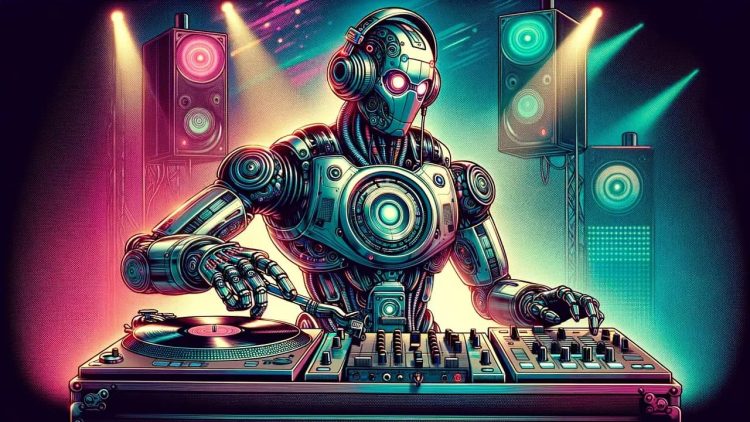Rightsify, the global leading company in music licensing, has upgraded its AI Music Generation Model with Hydra II. This is a complete guide on what has been upgraded and how to use it!
Highlights:
- Rightsify unveils Hydra II, the newest version of its cutting-edge generative AI tool for music.
- Hydra II is trained on an extensive Rightsify-owned data set of more than 1 million songs, and 50,000 hours of music.
- It is accessible at no cost through the free plan, allowing users to generate up to 10 music audios.
Meet Hydra II
Hydra II is the better version of the ‘Text to Music’ feature found in the original Hydra by Rightsify. The new model is trained on more than 1 million songs and 50,000 hours of music, over 800 instruments and with available in more than 50 languages.
This tool will empower users to craft professional instrumental music and sound effects swiftly and effortlessly. Also equipped with a range of new editing tools, Hydra II empowers users to create fully customizable, copyright-free AI music.
Notably, to maintain copyright compliance and prevent misuse, Hydra II refrains from generating vocal or singing content, thus ensuring the integrity of its output. Here is the official statement we got from the CEO:
“We are dedicated to leveraging the ethical use of AI to unlock the vast potential it holds for music generation, both as a valuable co-pilot for artists and music producers and a background music solution. Hydra II enables individuals and businesses, regardless of musical knowledge and background, to create custom and copyright-free instrumental tracks through a descriptive text prompt, which can be further refined using the comprehensive editing tools.”
Alex Bestall, CEO of Rightsify
So, whether you’re a seasoned music producer seeking inspiration for backing tracks or a marketer in search of the perfect soundtrack for an advertisement, Hydra II offers unparalleled capabilities for commercial use.
This happened at just a time when Adobe was also developing its generative AI tool, which might be a big boost for such types of tools.
Looking Into Training Data
Hydra II is trained on an extensive Rightsify-owned data set of more than one million songs and 800 instruments worldwide. This features a significant improvement over the Hydra model that was trained on a dataset of 60k songs with more than 300 unique musical instruments.
The new features a meticulously curated music dataset, labelled with essential attributes such as genre, key, tempo, instrumentation, description, notes, and chord progressions. This comprehensive dataset enables the model to grasp intricate musical structures, producing remarkably realistic music.
Hydra II Compared to Hydra I
With each piece of music, the model continues to learn and evolve, allowing for the creation of high-quality and distinctive compositions. Additionally, users can refine their creations further with the newly introduced editing tools within Hydra II.
These editing tools include:
- Remix Infinity: Modify speed, adjust tempo, change key, and apply reverb effects.
- Multi-Lingual: Support for prompts in over 50 languages, enabling diverse musical expressions.
- Intro/Fade Out: Create smooth transitions with seamless intros and outros for a polished finish.
- Loop: Extend track length by doubling it, perfect for live streaming and gaming applications.
- Mastering: Elevate overall sound quality to achieve professional studio-grade output.
- Stem Separation: Divide recordings into multiple tracks for precise customization.
- Share Track: Conveniently distribute compositions using a unique URL for easy sharing.
Usage Plans
Hydra II is currently available in 3 plans. They are as follows:
- Free Plan: Includes 10 free music generations with a limit of 30 seconds, but can’t be used for commercial use.
- Professional Plan ($39/month): Includes 150 music generations, and can be used for commercial purposes across all mediums.
- Premium Plan ($99/month): Includes 500 music generations, and can be used for commercial purposes across all mediums
Rightsify also grants access to its API which is based on specific use cases. The pricing is determined based on the task. To avail the API, users can register their interest by filling out the following form.
How to Use Hydra Free Plan?
First, you need to Sign up for the free plan available by clicking on the following link. After that, activate your account using the link sent to your registered email. Then, log in to Hydra. You will see the following screen:

Now, we need to enter a prompt: “Upbeat pop, with Synth and electric guitar, modern pop concert vibes.“

Now, you will get the generated music as output:

1) Prompt- Upbeat pop, with Synth and electric guitar, modern pop concert vibes pic.twitter.com/jV8K3ogSdY
— dhruv (@_dhruvvvvv_) March 22, 2024
The first video in the above tweet is for Hydra I and the second video is for Hydra II.
In the same way, let’s take a look at the results for a few more prompts, where we will compare both Hydra I and Hydra II respectively:
2) Prompt- Soft acoustic guitar tune with a 4 chord progression and soulful sound pic.twitter.com/0BLVI4Lyoi
— dhruv (@_dhruvvvvv_) March 22, 2024
3) Prompt- Melancholy piano ballad with lofi mellow vibes pic.twitter.com/EAOavJUUiq
— dhruv (@_dhruvvvvv_) March 22, 2024
Additionally, it excels in generating outputs for prompts in different languages, such as Spanish and Hindi:
4) Prompt- Lively Spanish guitar melody with a flamenco rhythm pic.twitter.com/mvxWCWiQls
— dhruv (@_dhruvvvvv_) March 22, 2024
5) Prompt- Soulful Hindi melody with traditional instruments like sitar and tabla pic.twitter.com/KBdh22t5Px
— dhruv (@_dhruvvvvv_) March 22, 2024
As demonstrated in the examples, Hydra II surpasses its predecessor across various metrics. Its superior performance stems from its extensive training data, which enables it to produce better higher music quality.
Conclusion
By prioritizing efficiency and diversity, Hydra II allows users to seamlessly blend genres and cultures, facilitating the creation of unique tracks in under a minute and at scale. This evolution marks a significant advancement in the model’s capabilities and opens up new possibilities for creative expression in the realm of AI-generated music.








